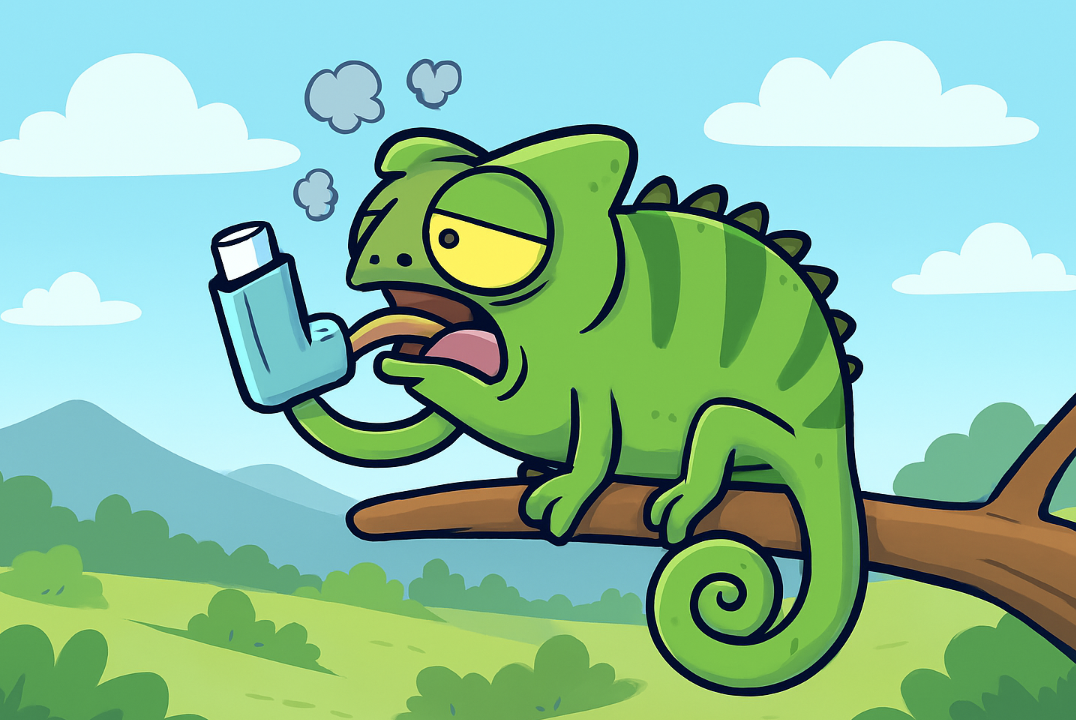Myth 63: “RI: Respiratory Infection Is Caused By Specific Bacteria, The Keeper Is Not Responsible For It”

The Reality of Respiratory Infections in Chameleons
Contrary to the claim that respiratory infections (RIs) are solely caused by specific bacteria and absolve the keeper of responsibility, the reality is far more complex and husbandry-dependent.
Most RIs in captive reptiles, especially chameleons, are not caused by inherently aggressive pathogens. Instead, they emerge from the interaction between ever-present, airborne, opportunistic bacteria and suboptimal environmental conditions. Importantly, respiratory infections have never been documented in wild chameleons under natural conditions.
Common Bacterial Agents
The most frequent bacterial culprits in reptile RIs include:
Aeromonas spp.
Pseudomonas spp.
Mycoplasma spp.
Salmonella spp.
These organisms are often part of the ambient environment and become pathogenic only when the host's immune system is compromised. They can proliferate and spread within enclosures, especially on:
Artificial plants
Moist cage walls and backdrops
Coconut fiber walls and ropes
Root Causes in Captive Husbandry
Based on extensive personal experimentation and observation, especially with montane species, the most common root causes of RI in chameleons include:
Absence of pollen in the diet (bee pollen is critical for immune support)
High humidity combined with high temperatures, often due to:
Misting under strong basking lights
Fogging at temperatures above 65°F (18°C)
Low ventilation, leading to stagnant, moist air
Poor overall health, exhaustion, or stress
Underlying parasitoses or concurrent diseases
Preventive Measures
To prevent RI, keepers must adopt a no-compromise, naturalistic approach to chameleon husbandry:
Study species-specific needs from reliable, science-based sources
Supplement and gut-load feeders with bee pollen
Avoid misting or fogging during the day at high temperatures
Mist only before lights turn on and after they turn off
If daytime misting is necessary, turn off heat sources several minutes beforehand and ensure strong ventilation
Never fog during the day or above 65°F (18°C)
Use foggers only at night or early morning when temperatures are low
Ensure excellent ventilation
Use mesh or hybrid cages
Add active ventilation systems if needed
Maintain strict hygiene
Remove feces and dust regularly
Avoid plastic plants, ropes, and permanently moist materials like coconut walls
Sanitize the facility and purify air using HEPA filters and UVA sterilizers
If RI Occurs: Diagnosis and Treatment
Symptoms (to be detailed separately) should be recognized early. If caught in time and treated by a competent veterinarian, the prognosis is generally good.
Ideal treatment protocol includes:
Bacterial identification
Antibiotic sensitivity testing
Targeted antibiotic therapy (prescribed/administered by a vet)
Caution: Antibiotics can cause liver damage and disrupt physiological balance. They are not a cure-all.
Critical Warning
No treatment will succeed unless the root causes are addressed. Without correcting husbandry conditions, any recovery is temporary. Reinfection is often fatal due to:
Weakened immune systems
Increased bacterial resistance to antibiotics